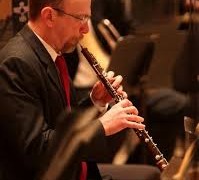Why oboes cost the earth
NewsA high-end oboe can cost $14,000, four times as much as top flute.
Why is that? Something to do with scarce African blackwood and rare craftsmanship.
Watch.

A high-end oboe can cost $14,000, four times as much as top flute.
Why is that? Something to do with scarce African blackwood and rare craftsmanship.
Watch.
Responding to Wigmore Hall’s withdrawal from its patronage,…

The leading Mexican conductor Enrique Batiz died yesterday…

We hear that two string players in the…

From the Santa Fe New Mexican: Charles MacKay,…

Session expired
Please log in again. The login page will open in a new tab. After logging in you can close it and return to this page.
Comments